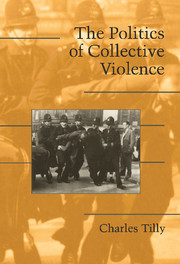3 - TRENDS, VARIATIONS, AND EXPLANATIONS
Published online by Cambridge University Press: 05 June 2014
Summary
A Violent Century
In absolute terms – and probably per capita as well – the twentieth century visited more collective violence on the world than any century of the previous ten thousand years. Although historians rightly describe China's Warring States period, Sargon of Akkad's conquests, Mongol expansion, and Europe's Thirty Years War as times of terrible destruction, earlier wars deployed nothing like the death-dealing armaments, much less the state-backed extermination of civilians, that twentieth-century conflicts brought with them. Between 1900 and 1999, the world produced about 250 new wars, international or civil, in which battle deaths averaged at least a thousand per year. That means two or three big, new wars per year. Those wars caused about a million deaths per year.
Assuming midcentury world populations of 0.8 billion, 1.2 billion, and 2.5 billion, the world death rate for large-scale war ran around 90 per million population per year during the eighteenth century, 150 per million during the nineteenth century, and over 400 per million during the twentieth (Holsti 1996; Tilly et al. 1995). Altogether, about 100 million people died as a direct result of action by organized military units backed by one government or another over the course of the twentieth century. Most likely a comparable number of civilians died of war-induced disease and other indirect effects.
To be sure, two world wars contributed mightily to twentieth-century totals; battle deaths in World War I amounted to about 10 million across all theaters, and battle deaths in World War II ran close to 15 million.
- Type
- Chapter
- Information
- The Politics of Collective Violence , pp. 55 - 80Publisher: Cambridge University PressPrint publication year: 2003



